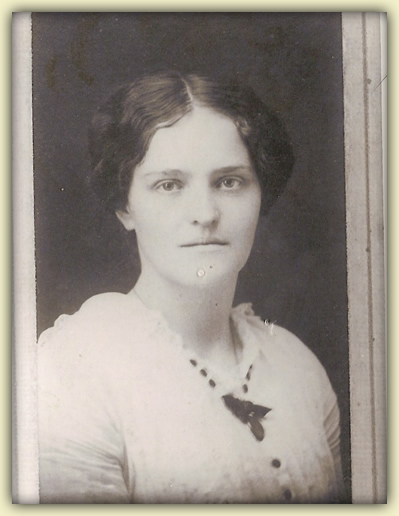 Although the Lamerton Historical Society's tome Land of the Lakes is hardly Debrett's or even Who's Who, it is worth noting that my great-grandmother's story made it into print. In 1916, it notes, Ken McNeil "married Ethel Mildred, youngest daughter of Mr. and Mrs. Ferguson of the Nebraska district. They had two children, Roderick and Betty Jean. Ethel McNeil was very fond of horseback riding and it is said of her, that she would ride side-saddle with Roderick, then a baby, on one arm and carry a pail of berries on the other."
Although the Lamerton Historical Society's tome Land of the Lakes is hardly Debrett's or even Who's Who, it is worth noting that my great-grandmother's story made it into print. In 1916, it notes, Ken McNeil "married Ethel Mildred, youngest daughter of Mr. and Mrs. Ferguson of the Nebraska district. They had two children, Roderick and Betty Jean. Ethel McNeil was very fond of horseback riding and it is said of her, that she would ride side-saddle with Roderick, then a baby, on one arm and carry a pail of berries on the other."
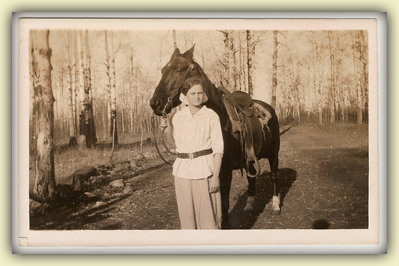 Such feats of horsemanship were undoubtedly an expression of joy; Ethel truly loved to ride, and her horse Dick was a trusty companion. But they were also an impressive adaptation strategy. Born in Crawford, Nebraska in 1894 to Scottish immigrants, baby Ethel was stricken with polio at eleven months of age. She recovered her health, but her left leg was badly affected, shorter and thinner than her right. She wasn't expected to walk at all, and was later told that she shouldn't do so without a leg brace. But although she often stumbled and fell, Ethel not only learned to walk without assistance and developed her horsemanship, but also became a passionate dancer. My aunt remembers her attending three or four dances a week in middle age, at which she would dance every number.
Such feats of horsemanship were undoubtedly an expression of joy; Ethel truly loved to ride, and her horse Dick was a trusty companion. But they were also an impressive adaptation strategy. Born in Crawford, Nebraska in 1894 to Scottish immigrants, baby Ethel was stricken with polio at eleven months of age. She recovered her health, but her left leg was badly affected, shorter and thinner than her right. She wasn't expected to walk at all, and was later told that she shouldn't do so without a leg brace. But although she often stumbled and fell, Ethel not only learned to walk without assistance and developed her horsemanship, but also became a passionate dancer. My aunt remembers her attending three or four dances a week in middle age, at which she would dance every number.
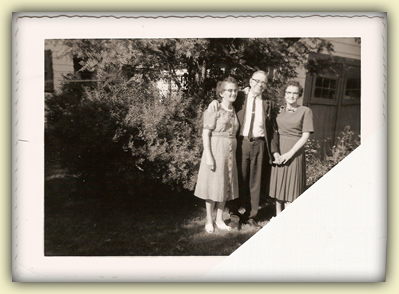 Not that she was without self-consciousness about her leg. In nearly all surviving photographs, she is hiding it in some way, either crossed behind the right one or hidden behind a pillar or shrub. In one extreme example, apparently liking the rest of an image but hating that it showed her leg, she cut off the offending corner of a photograph and kept the rest. From a modern perspective, and not having seen her limping walk, this strikes me as an overreaction, a vanity, but it's much more understandable when I consider the social attitude toward "cripples" in Ethel's time. People would comment in the street that she "ought not be out public," and once, at a dance, a woman insisted that Ethel had a wooden leg. At the turn of the century, many still strongly believed that a person's moral and emotional life was reflected in their outward appearance, causing physically disabled folks to be shunned or looked down upon more than ever. From this perspective, Ethel's stubborn insistence on walking, riding, and dancing, strengthening her leg and her figurative backbone instead of hiding at home, seems admirable indeed.
Not that she was without self-consciousness about her leg. In nearly all surviving photographs, she is hiding it in some way, either crossed behind the right one or hidden behind a pillar or shrub. In one extreme example, apparently liking the rest of an image but hating that it showed her leg, she cut off the offending corner of a photograph and kept the rest. From a modern perspective, and not having seen her limping walk, this strikes me as an overreaction, a vanity, but it's much more understandable when I consider the social attitude toward "cripples" in Ethel's time. People would comment in the street that she "ought not be out public," and once, at a dance, a woman insisted that Ethel had a wooden leg. At the turn of the century, many still strongly believed that a person's moral and emotional life was reflected in their outward appearance, causing physically disabled folks to be shunned or looked down upon more than ever. From this perspective, Ethel's stubborn insistence on walking, riding, and dancing, strengthening her leg and her figurative backbone instead of hiding at home, seems admirable indeed.
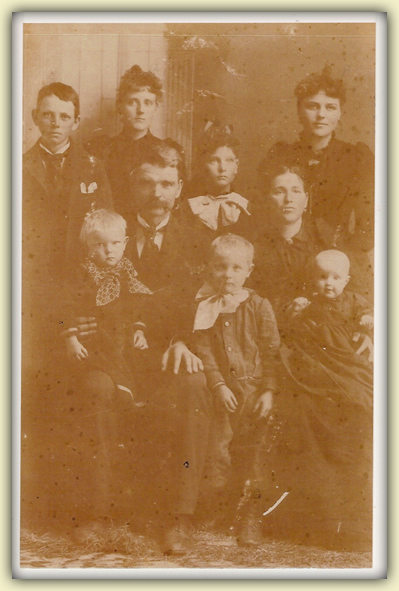 My aunt speculates that the promise of more open schooling opportunities for Ethel may have contributed to the Fergusons' decision to leave Crawford in 1900. The Ferguson brood emigrated to the Canadian border in a wagon train, then traveled farther into Alberta by locomotive, eventually settling on a homestead lot kitty-corner to that of the McNeils, whose son Ethel would later marry. A postcard to him from March of 1916 reveals an eager paramour, despite the harshness she could also exhibit:
My aunt speculates that the promise of more open schooling opportunities for Ethel may have contributed to the Fergusons' decision to leave Crawford in 1900. The Ferguson brood emigrated to the Canadian border in a wagon train, then traveled farther into Alberta by locomotive, eventually settling on a homestead lot kitty-corner to that of the McNeils, whose son Ethel would later marry. A postcard to him from March of 1916 reveals an eager paramour, despite the harshness she could also exhibit:
"Dear Ken, Forbes told me some little time ago that you were coming in and I have nearly looked my eyes out since, every train day."
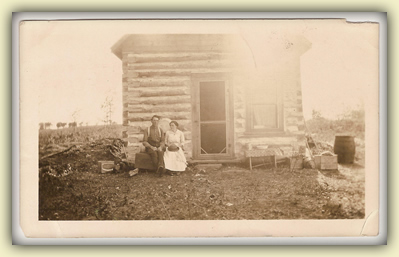 The first house she shared with Kenneth was a log cabin he built near Tees, Alberta. ("Near Tees" was their official address, as noted on their national registration cards.) She spoke from experience when, years later, on learning that her granddaughter was moving to Alaska, she exclaimed "Oh Patti, don't live in a log cabin! You'll have to chink the logs!" Nevertheless, the frontier life wasn't completely lost on Ethel; in addition to her prowess at horseback-riding, she was a crack shot, and later in life would keep a loaded gun on a shelf in the kitchen when she wasn't using it to pick off gophers in the front yard. So too, those homesteading years must have contributed to her lifelong thriftiness, her ability to squeeze the life out of every penny. She was probably relieved to make the move to Portland, Oregon in 1922, but the transplantation to a more developed region didn't reduce her frugality. Although poor, she would comb the Goodwill and Salvation Army bins and come out with gorgeous chiffon circle dresses for fifty cents, and looked like a million bucks when she wore them to her many parties and dances.
The first house she shared with Kenneth was a log cabin he built near Tees, Alberta. ("Near Tees" was their official address, as noted on their national registration cards.) She spoke from experience when, years later, on learning that her granddaughter was moving to Alaska, she exclaimed "Oh Patti, don't live in a log cabin! You'll have to chink the logs!" Nevertheless, the frontier life wasn't completely lost on Ethel; in addition to her prowess at horseback-riding, she was a crack shot, and later in life would keep a loaded gun on a shelf in the kitchen when she wasn't using it to pick off gophers in the front yard. So too, those homesteading years must have contributed to her lifelong thriftiness, her ability to squeeze the life out of every penny. She was probably relieved to make the move to Portland, Oregon in 1922, but the transplantation to a more developed region didn't reduce her frugality. Although poor, she would comb the Goodwill and Salvation Army bins and come out with gorgeous chiffon circle dresses for fifty cents, and looked like a million bucks when she wore them to her many parties and dances.
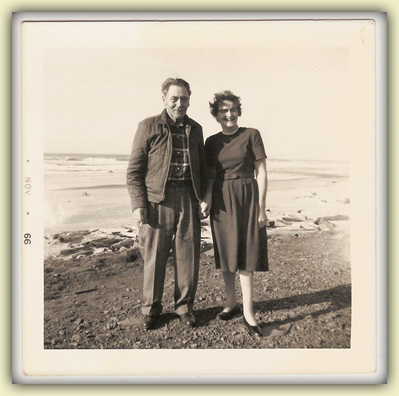 Ken died in 1954, and the family story is that Ethel grieved for exactly one year. When the year was up, she dove back into life, into her travels and dances, her activities with her girlfriends and the Peninsula Garden Club. About a decade later she remarried, despite the strong disapproval of the rest of the family, to a compulsive drinker and gambler named Allen. Almost immediately upon her divorce three years later, she began a relationship with her friend Charles, and the two of them formed a partnership that lasted thirteen years and ended with his death. They never married, though; Ethel claimed that "when I get tired of Charles, I can send him home," and she aimed to keep it that way.
Ken died in 1954, and the family story is that Ethel grieved for exactly one year. When the year was up, she dove back into life, into her travels and dances, her activities with her girlfriends and the Peninsula Garden Club. About a decade later she remarried, despite the strong disapproval of the rest of the family, to a compulsive drinker and gambler named Allen. Almost immediately upon her divorce three years later, she began a relationship with her friend Charles, and the two of them formed a partnership that lasted thirteen years and ended with his death. They never married, though; Ethel claimed that "when I get tired of Charles, I can send him home," and she aimed to keep it that way.
Ethel had an ornery, contrary temperament that could be exasperating, especially to her daughter (my grandmother) Betty Jean. The less favored child throughout her life, Betty was always held second to her brother, expected to take on more duties and live up to a higher standard, with less recognition and fewer rewards. A number of family members recall the palpable tension that would sometimes gather in the air when Betty and her mother were in the same room. Ethel could often be impatient with those around her, and often lacked empathy; this seems to have been true of her behavior, for example, when both Ken and Charles were dying. She had a hard edge, perhaps partly derived from a life of relative poverty and having to defend herself to friends and strangers alike.
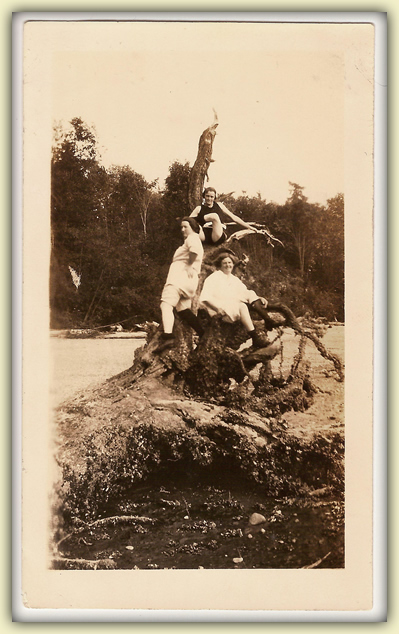 Nevertheless, Ethel was not without a playful, humorous side. My uncle Steve tells of a time she had hired him to do some yardwork for her, and he parked his bike against her garage. Minutes later, he looked through the window to see a boy on an identical bike racing past the house. Lighting out and cutting off the thief, Steve knocked the kid to the ground and hit him in the face as hard as he could – upon which, looking up, he noticed his own bike still parked safely next to his grandmother's garage. According to Steve, Ethel laughed all afternoon about the story. Occasionally, when she felt especially comfortable (as in this photo taken with her sister-in-law and a girlfriend), she was even capable of being playful about her injured leg, showing to the camera what she usually took pains to hide.
Nevertheless, Ethel was not without a playful, humorous side. My uncle Steve tells of a time she had hired him to do some yardwork for her, and he parked his bike against her garage. Minutes later, he looked through the window to see a boy on an identical bike racing past the house. Lighting out and cutting off the thief, Steve knocked the kid to the ground and hit him in the face as hard as he could – upon which, looking up, he noticed his own bike still parked safely next to his grandmother's garage. According to Steve, Ethel laughed all afternoon about the story. Occasionally, when she felt especially comfortable (as in this photo taken with her sister-in-law and a girlfriend), she was even capable of being playful about her injured leg, showing to the camera what she usually took pains to hide.
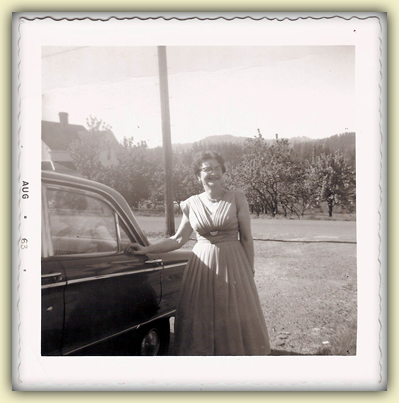 The Ethel Mildred Ferguson pullover is an homage to my great-grandmother's homesteading years. Worked in an undyed, worsted-weight Cormo from Martha's Vineyard CSA, the dense, rustic fabric recalls the cold weather and primitive conditions of that first log cabin. The columns of horseshoe cables on either side of the front and back suggest Dick's galloping hooves, while free-form cables evoke the blackberry vines from which she filled her bucket. And with its waist shaping and deep ribbing it's both practical and pretty, just like Ethel's fifty-cent dancing dresses.
The Ethel Mildred Ferguson pullover is an homage to my great-grandmother's homesteading years. Worked in an undyed, worsted-weight Cormo from Martha's Vineyard CSA, the dense, rustic fabric recalls the cold weather and primitive conditions of that first log cabin. The columns of horseshoe cables on either side of the front and back suggest Dick's galloping hooves, while free-form cables evoke the blackberry vines from which she filled her bucket. And with its waist shaping and deep ribbing it's both practical and pretty, just like Ethel's fifty-cent dancing dresses.